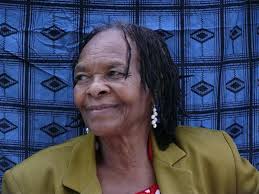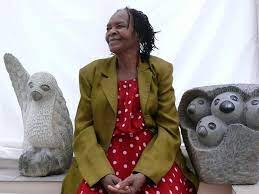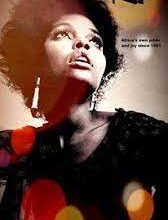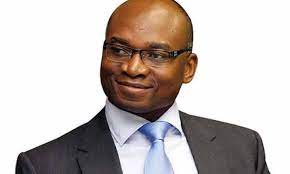CREATING ART FROM NATURE’S RAW MATERIALS – MEET LOCARDIA NDANDARIKA, THE MOTHER OF STONE SCULPTURE

LOCARDIA NDANDARIKA

By Kamangeni Phiri 15/2/2023
Locardia Ndandarika, known in art circles as the woman who could make a stone “tell a story,” was her own person.
She was a self-driven passionate globetrotter who, in her lifetime, explored the world through stone sculpting.
Locardia battled to be the public face of success rather than be a behind-the-scenes figure at a time when it was not expected of women to do so. She was married for 14 years to the late Joseph Ndandarika, a world famous sculptor, but she refused to bask in the glory of her more celebrated spouse.
When she got married about five decades ago, it was rare to meet a woman sculptor in Zimbabwe. However, Gogo Ndandarika was no ordinary woman. She was determined to succeed despite the prejudices and discouragements proffered by the society around her.
Throughout her adult life until her death on January 5 this year-2023, Locardia refused to be the proverbial lady in the adage, ‘behind every successful man there is a woman’.
Her experience with her late ex-husband made Locardia view the adage as limiting women in chasing their dreams.
“As you know I was married to Joseph Ndandarika, the famous artist. He didn’t like me touching his tools,” she recalled in one of her archived interviews. “He told me, I didn’t marry you for doing such things, I want you to look after my children.”
To her, the old saying was outdated as it was from a time when women were expected to be nothing more than helpful, silent and powerless partners.
Locardia was a first generation Shona stone sculptress and a native of Bindura who was born in 1945. An intelligent woman who did not have much of a formal education, she started her illustrious career in arts as a child making clay models of people and animals using traditional methods. With the passing of years she graduated into ceramic products as she went commercial. But it never dawned on her at that stage that she would one day grow to be Zimbabwe’s eminent sculptress.
In 1964, Locardia married the late Joseph Ndandarika, considered by many to be one of the doyens of sculpture in contemporary Zimbabwe. Joseph ranked among the world’s major stone artists.
The marriage marked Locardia’s transition into stone sculpting. She would silently observe her husband carving his stones and this motivated her to venture into the art work.
However, Joseph had a low opinion of women sculptors, so Locardia started to work on stones secretly whenever her husband would be away.
In 2016, the late sculptress shared her early challenges in the trade with Zimstone Gallery owner Jeff Brown in an interview that she gave at her home in Harare.
She said her romance with stones started in earnest around 1969 through the assistance of art enthusiast, Tom Bromfield, founder of Tengenenge Art Community.
Bromfield, at that time, used to give established artists stones to make sculptors that they would exhibit at his gallery.
“I asked him to give me some small pieces of stones so that I could also practice making sculptures. He obliged. I went on to dig a hole in the middle of my maize field where I hid the stones from Joseph,” she said.
Locardia told Jeff Brown that she would take the stones out one by one, carve them and hide the finished piece in the same hole.
“One day my husband left home for Marondera to attend an artist’s workshop. I told myself this was my chance to work on my pieces. I called four boys to wash the pieces for me. After a few minutes Joseph came back unexpectedly. He was shocked when he saw me working on the pieces. He asked me who the owner of the pieces was and I told him they were mine. I felt I was not supposed to hide them. He was hurt, he was jealousy. He then took my pieces and sold them and he did not give me any money. I was not worried when he took the money he got from selling my pieces. I told myself I owed Joseph for teaching me sculpting and the money he took was his payment,” she said.
Locardia said when Joseph sold her pieces, it confirmed to her that her work was good enough for the market.
She did not resist when Joseph ordered her to stop working with stones, arguing that they were very hard for a woman to work on.
“Joseph suggested I should revert to making clay pieces and he even accompanied me on my trip to look for the right clay for moulding. I would take my clay pieces to the National Arts Gallery for exhibition but he still would go there to collect my money and spend it. I then queried the authorities at the art gallery why they were giving him my money without my permission. I demanded all the money they owed me and they gave me,” said Locardia.
Some of her clay pieces are part of the permanent Frank McEwen Collection at the British Museum.
Eventually she divorced Joseph in 1978 after 14 years of marriage when he realised that he would never support her artistic dreams. Locardia decided to go to night school. She put herself first through primary school and later trained as a professional artist at the BAT Workshop at the Zimbabwe National Gallery.
But the going got really tough for the veteran Zimbabwean stone sculptor following her divorce as she struggled to make ends meet. She also had to contend with the death of a child as a single parent.
In 1986 she became a member of the Workshop Gallery. She was also invited to work at the Chapungu Sculpture Park.
As one of the first women to start sculpting in stone in modern Zimbabwe, Locardia can rightly be called the mother of stone sculpture.
Her motherly nature made her refuse to have young artists who were plagiarizing her works punished by the National Art Gallery.
“I am like a teacher to the kids. My students can have the same writing with mine; I see no problem with that. If something good can come out of these youngsters copying my work, if they can change a piece’s eyes and make them appear different from those on mine, then let them do it. I am sure sculpting helps keep youths away from mischief and other juvenile delinquencies. I am not a Christian but I sympathise with these kids. They don’t know how to master the art of sculpting, so if they can learn through copying it is still good by me, no problem,” she said in her 2016 interview with Jeff Brown.
Authorities at the gallery had approached her seeking permission to deal with the errant youthful artist.
For a woman who started her career poor and illiterate, Locardia did remarkable well as an artist, thanks to her perseverance and patience.
“People should not despair under difficult circumstances but should soldier on. Patience pays a great deal,” she said in an interview some years back.
She exhibited and held workshops in the United States, Belgium, Netherlands, Sweden, Denmark, South Africa and New Zealand, among many other countries. The late veteran sculptress even exhibited at such prestigious venues as the Museum of Modern Art in New York and Musee Rodin in Paris.
Locardia’s career highlights include her being invited to exhibit during the 1990 Commonwealth Games in New Zealand, where her work ‘Spiritual Cave’ is still on public display in the Timaru Botanical Gardens.
One of her pieces, ‘Mother baboon with twins’, fetched ZW$18,000, the highest price she ever got for a single art piece in her illustrious career.
She used the money to buy a house in Chitungwiza as the amount was, at the time, roughly equivalent to the same amount in British pounds.
Each piece takes anything between three weeks to a month each to perfect it.
“Sculpture is not just stone, it is language that speaks to the mind. The stone and I communicate. The stone tells me what to create. If I force it, it will break,” she explained.
Her pieces are centred on “hunhu or ubuntu” and family values. She also liked making animal sculptures.
And “hunhu” was the inspiration behind her HIFA pieces, Mukwasha, Triplets and Lovers.
Locardia’s entire work was defined by this philosophy of “hunhuism/ubuntuism”.
Locardia’s sculpture pieces expressed human relationships, the fragility of the earth and the ominous presence of spiritual and traditional powers in our lives.
Two of her seven children, son Ronnie Dongo and daughter Virginia Ndandarika are established artists.
Locardia was a skilled welder who received awards for her work with metal. She was also a mentor who tutored many aspiring sculptors.
Her legacy is indeed in safe hands.


